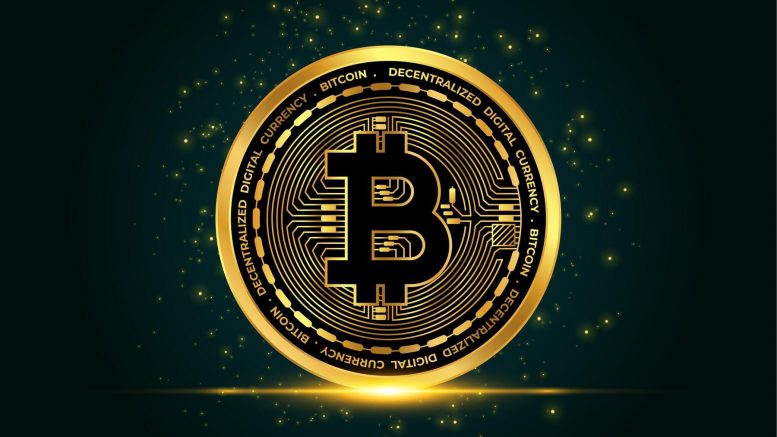Bitcoin is not just a currency but a revolutionary digital asset that has reshaped how we think about money. Since its inception in 2009 by an anonymous entity known as Satoshi Nakamoto, Bitcoin has undergone significant changes and developments that have impacted its value and the broader financial landscape. This article explores Bitcoin’s history, the mechanics of mining and halving, its capped supply, and the implications of its scarcity.
Brief History of Bitcoin
Creation and Early Days: Bitcoin was introduced to the world through a white paper entitled “Bitcoin: A Peer-to-Peer Electronic Cash System,” published by Satoshi Nakamoto in 2008. The first block, known as the Genesis Block, was mined on January 3, 2009. The first transaction in Bitcoin was between Nakamoto and an early adopter named Hal Finney.
Growth and Adoption: Over the years, Bitcoin has grown from a niche project circulated among cryptography enthusiasts to a major financial asset recognized by investors and institutions worldwide. Its journey has been marked by rapid price changes, regulatory challenges, and a growing acceptance among businesses and consumers.
Bitcoin Mining and Blocks
Mining Process: Miners generate new bitcoins by adding transaction records to Bitcoin’s blockchain. This involves solving a computationally difficult puzzle, the solution to which is verified by other network participants and added to the blockchain. This process secures the network against fraudulent transactions and attacks.
Block Formation: Transactions are verified and compiled into a block by miners. Each new block is linked to the previous block, forming a secure blockchain. The average time to mine a single Bitcoin block is approximately 10 minutes.
What is Bitcoin Halving?
Bitcoin halving is an integral part of the Bitcoin network’s economic model designed to control inflation by reducing the block rewards given to miners by half every 210,000 blocks, or roughly every four years. This mechanism ensures that the total supply of Bitcoin does not exceed 21 million coins.
- Bitcoin Halving Date in 2024 – 19 Apr 2024
Since Bitcoin’s inception, there have been four such halvings:
- 2012: The reward fell from 50 to 25 bitcoins.
- 2016: The reward dropped from 25 to 12.5 bitcoins.
- 2020: The reward was reduced from 12.5 to 6.25 bitcoins.
- 2024: The most recent halving decreased the reward to 3.125 bitcoins.
Bitcoin’s Capped Supply and Scarcity
Supply Cap: The total supply of Bitcoin is capped at 21 million coins. This cap is hardcoded into the Bitcoin protocol and is a critical feature that helps to maintain scarcity and value over the long term.
Implications of Scarcity: Scarcity is essential for maintaining not just the price but the interest in Bitcoin as a digital gold. Unlike fiat currencies which can be printed at the discretion of central banks, Bitcoin’s supply is finite, making it resistant to inflation and devaluation.
Mining Capabilities and Daily Output
Current Block Reward: As of the fourth halving in 2024, the reward for mining a single block is 3.125 bitcoins.
Daily Bitcoin Output: The number of bitcoins generated per day depends on the block reward and the block time. Assuming a block time of 10 minutes, approximately 144 blocks are mined per day. With a current block reward of 3.125 BTC, the daily output is about 450 bitcoins per day.
This output will decrease with subsequent halvings, further emphasizing the scarcity and potential value increase of Bitcoin as fewer new coins enter the system.
Market Dynamics and Price Influences
Supply and Demand: Bitcoin’s price is heavily influenced by its capped supply and the rate of new coins entering the system through mining. Halving impacts this balance by reducing the rate of new supply, which can lead to price increases if demand remains steady or grows.
External Factors: Besides internal mechanics like halving and mining, Bitcoin’s price is also influenced by external factors such as technological advancements, macroeconomic variables, and regulatory changes. Each of these can either bolster or hinder Bitcoin’s mainstream adoption and market value.
Investor Sentiment: Speculation and investor sentiment play significant roles in the cryptocurrency market. Events like halving tend to boost speculative interest, potentially driving up prices in anticipation of reduced future supply.
Bitcoin’s complex interplay of history, technology, economics, and market sentiment makes it a unique asset in the financial landscape. The capped supply and halving mechanism promote scarcity, potentially increasing Bitcoin’s value as more people adopt it as a store of value. Understanding these factors is essential for anyone engaging with Bitcoin, whether they are seasoned investors, casual participants, or new entrants curious about the potential of cryptocurrencies. As Bitcoin continues to evolve, it remains a fascinating subject of study and investment.
Frequently Asked Questions
Is Bitcoin OK to invest in?
Bitcoin, like any other investment, carries its risks and rewards. It’s known for its price volatility which can result in significant gains or losses in a short period. Before investing, it’s crucial to conduct thorough research, understand your financial threshold for volatility, and consider your investment timeframe. Many view Bitcoin as a long-term investment and a hedge against inflation, similar to gold. Consulting with a financial advisor tailored to cryptocurrency investments can also provide personalized insights.
Is Bitcoin Legal in India?
As of the latest updates, Bitcoin is not illegal in India; however, it exists in a regulatory gray area. The Indian government has not granted legal tender status to Bitcoin or any other cryptocurrency. In 2018, the Reserve Bank of India (RBI) imposed a ban on bank transactions with crypto-related businesses, but this was overturned by the Supreme Court in March 2020. Investors can buy, sell, and trade cryptocurrencies, but they should remain cautious and stay updated with the government’s changing policies regarding cryptocurrencies.
Will BTC go up after halving?
Historically, the price of Bitcoin has increased following a halving event. This pattern arises because the halving reduces the rate at which new bitcoins are generated, thus slowing down the supply while demand remains steady or increases. However, past performance is not always indicative of future results, and while many anticipate price increases post-halving, several external factors like market sentiment, global economic conditions, and technological changes can also significantly influence Bitcoin’s price.
How does Bitcoin work?
Bitcoin operates on a technology called blockchain, which is a decentralized ledger recording all transactions across a network of computers. Transactions are grouped into blocks and verified by miners who use powerful computers to solve complex mathematical problems. Once a problem is solved, the block is added to the blockchain, and the miner is rewarded with bitcoins. This not only facilitates the creation of new bitcoins but also secures and verifies transactions without the need for a central authority.
Who invented Bitcoin?
Bitcoin was invented by an individual or group of individuals using the pseudonym Satoshi Nakamoto. Nakamoto introduced Bitcoin in 2008 with the publication of a white paper titled “Bitcoin: A Peer-to-Peer Electronic Cash System” and subsequently released the first software that launched the network in 2009. Nakamoto’s true identity remains unknown.
How can I buy Bitcoin in India?
To buy Bitcoin in India, you can use a cryptocurrency exchange that accepts local currency transactions. Popular platforms include WazirX, CoinSwitch, CoinDCX, and ZebPay. Here are the general steps:
- Register with a cryptocurrency exchange that operates in India.
- Complete the KYC (Know Your Customer) process to verify your identity.
- Deposit INR into your exchange account using bank transfer, UPI, or other available methods.
- Place an order to buy Bitcoin.
- Secure your Bitcoins by transferring them to a personal wallet, especially if planning to hold them long-term.
Is Bitcoin safe to invest in India?
Investing in Bitcoin in India involves risks, including regulatory risks, price volatility, and potential technological failures. However, if you choose a reputable exchange and employ robust security measures (like using hardware wallets for storage), you can manage these risks effectively. Keep abreast of regulatory announcements from entities like the RBI and the Government of India, as policy shifts can impact the safety and legality of your investment.
Can fractional amounts (INR 100, INR 1000) of bitcoin be purchased in India?
Yes, fractional amounts of Bitcoin can be purchased in India, just as in other countries. Bitcoin is divisible up to eight decimal places, the smallest unit being one hundred millionth of a Bitcoin, known as a “Satoshi.” This divisibility makes it possible for investors to purchase small amounts of Bitcoin according to their budget.


Be the first to comment on "Understanding Bitcoin: History, Halving, Mining, and Market Dynamics"